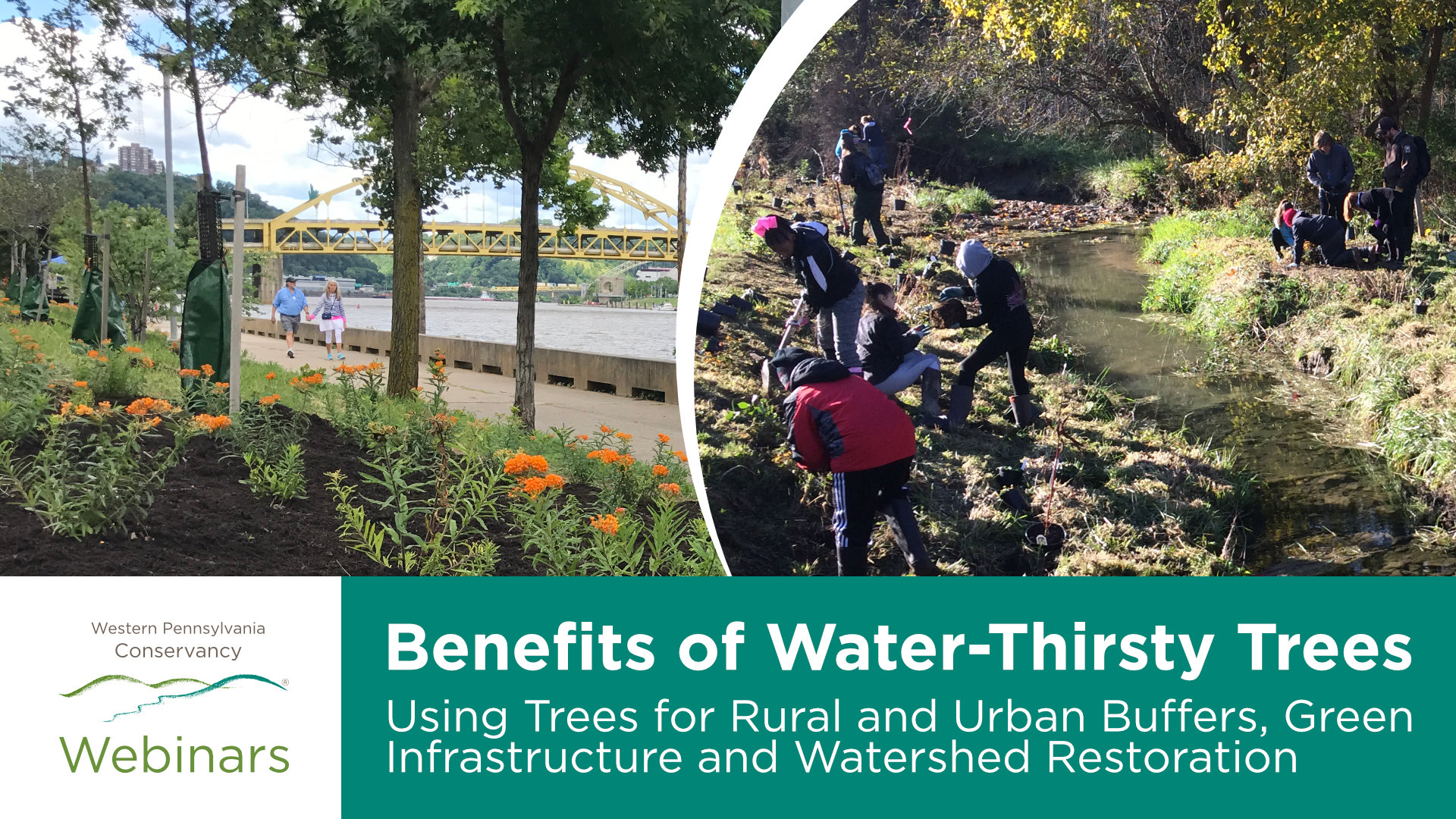
Trees are nature’s powerhouses that provide so many community and environmental benefits. Trees absorb carbon dioxide from the atmosphere and release oxygen back into the air. Birds, fish, insects and mammals depend on trees for habitat, food and protection. A walk along many neighborhood streets can reveal the diversity, beauty and revitalization that trees provide our communities and towns.
One mature tree can intercept nearly 2,000 gallons of rainfall each year, making trees a natural ally in managing stormwater runoff and reducing flooding and stream pollution. Through our community forestry and watershed conservation programs and TreeVitalize Pittsburgh partnership, the Conservancy has planted more than 105,000 trees near streams and roadways, in parking lots, and along trails, hillsides and sidewalks as part of green infrastructure, also known as natural stormwater management, or watershed restoration projects.
In our free Sept. 30 webinar, “Benefits of Water-Thirsty Trees,” you’ll learn more about these projects and the type of trees we plant along rivers and streams, and in other locations, to help intercept stormwater, stabilize hillsides and reduce the effects of flooding.
Join Conservancy staff, Watershed Project Manager Alysha Trexler and Community Forester Brian Crooks, as they discuss the best tree species for rural and urban buffers, green infrastructure projects and other solutions to improve water quality and beautify underdeveloped areas within our region. Plus, we’ll share how you can get more involved and help us plant more trees. Also, you’ll discover how you can make a difference in your own backyard or landscape to capture more stormwater and reap the many benefits of trees!
About the Presenters
Alysha B. Trexler, Watershed Project Manager
Alysha has a bachelor of science degree in biology and a minor in chemistry from Indiana University of Pennsylvania. She has more than 19 years of experience with water quality and biological monitoring, physical stream habitat assessment, abandoned mine drainage remediation, agriculture best management practices and nutrient management, riparian habitat improvement design and installation, public education and outreach, and watershed project management and implementation.
Brian Crooks, Community Forester and TreeVitalize Pittsburgh GIS Coordinator
Brian has a bachelor of science degree in forest science and a graduate-level certificate in GIS from Penn State University. He also has a professional arborist certification from the International Society of Arboriculture. In his role as a community forester, he better understands and values trees as a tool to build stronger relationships and more resilient communities.
